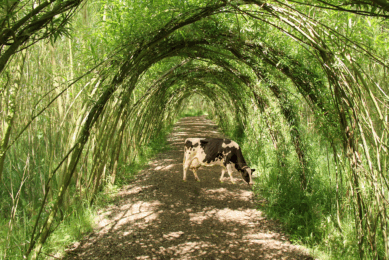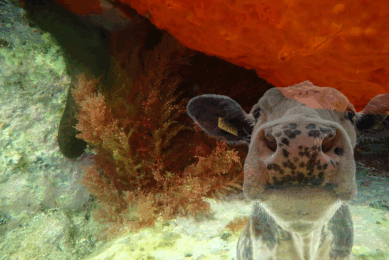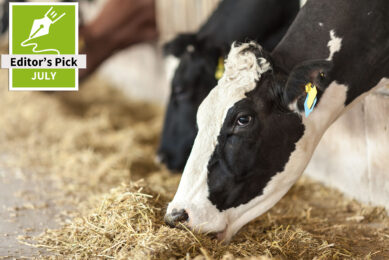Yeast in ruminant diets: The benefits of Saccharomyces cerevisiae
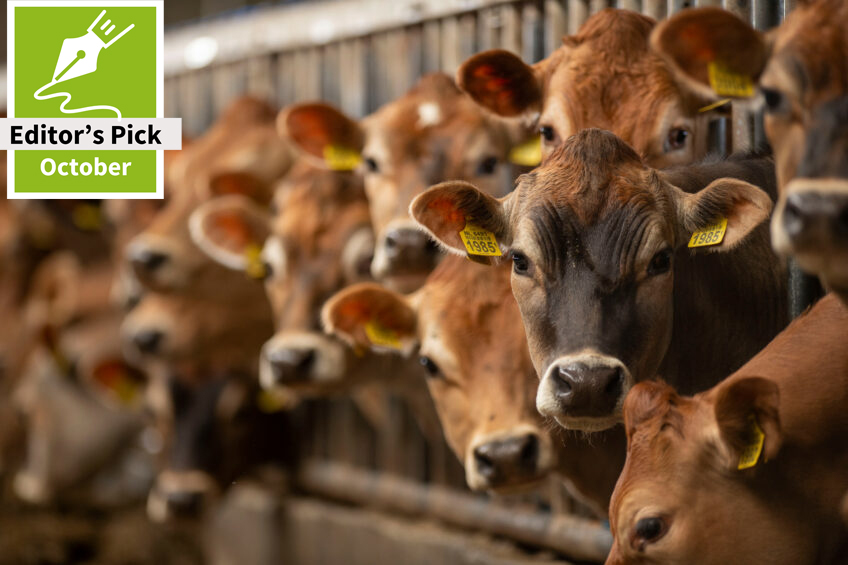
This article provides an overview of the impacts of Saccharomyces cerevisiae as a natural feed supplement in ruminants’ diets.
Saccharomyces cerevisiae, a yeast probiotic alters gut microbial ecology and fermentation patterns, and affects nutrient flow to the gut, nutrient digestibility, the quality of animal products and immunological response.
Impact on adhesion and the colonisation of pathogens
Saccharomyces cerevisiae adapts to its surroundings and limits the effects of pathogens by competing with them. In addition, mannan-oligosaccharides from yeast adhere to gut pathogens including Salmonella, Campylobacter jejuni, and E. coli, thus reducing their ability to adhere to and invade host cells. Inactive yeast and autolysed yeast inhibit Mycobacterium avium spp. paratuberculosis adhesion to mammary epithelial cells and reduce the risk of infection. Furthermore, dietary supplements containing mannan-oligosaccharides from yeast enhance the relative abundance of mucin secreting cells and minimise pathogen colonisation.
Impact on growth performance
Research shows that supplementing Saccharomyces cerevisiae in lamb diets increases dry matter intake, carcass weight and external carcass length. In addition, Saccharomyces cerevisiae increases the production of butyric and propionic acid, promotes the development of papillae in the rumen, and enhances glucogenic acid absorption, thus improving production performance.
In dairy cows it has been shown that adding Saccharomyces cerevisiae improves body weight gain and feed conversion ratio while reducing feed consumption.
Impact on cholesterol and triglyceride level
The Saccharomyces cerevisiae cell wall is mainly composed of glucans, mannan, and chitin substances which are essential in reducing cholesterol. β-glucan in yeast increases the cholesterol breakdown by binding to bile acids in the gut. Saccharomyces cerevisiae promotes the production of short-chain fatty acid, thus reducing hepatic cholesterol and triglyceride levels in heifers, according to research.
Furthermore, Saccharomyces cerevisiae reduces low-density lipoprotein cholesterol and triglyceride without any effect on the concentration of high-density lipoprotein cholesterol in serum. Moreover, mannan in Saccharomyces cerevisiae supports the elimination of circulating lipoproteins and decreases atherogenic low-density lipid fraction.
Impact on immune system function
β-glucans in Saccharomyces cerevisiae cell wall also have immunomodulatory functions and stimulate immune reactions in a wide variety of species, including rabbits, sheep, goats, cattle, horses, dogs, pigs and monkeys. In addition, β-glucans induce cell proliferation and act as antigen carriers. Supplementation with mannan oligosaccharides, from the yeast cell wall, affects gut microbiota by reducing plasma cholesterol and improves immunity.
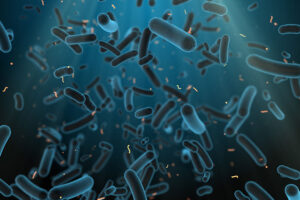
Impact on nutrient digestion and absorption
Yeast is a palatable source of essential nutrients for ruminants. Studies show that Saccharomyces cerevisiae stimulates appetite and maintains maximum dry matter intake by stimulating rumen fermentation and improving fibre digestion.
In addition, live Saccharomyces cerevisiae promotes the growth of cellulolytic bacteria and increases fibre digestion of low-quality corn silage, thus improving digestion and nutrient utilisation. Also, Saccharomyces cerevisiae decreases the rumen concentration of ammonia, increases incorporation of ammonia into microbial protein, and improves the amino acid profile of digesta. Moreover, Saccharomyces cerevisiae supplementation manipulates rumen microbial population and improves energy and protein supply in lactating cows fed low-quality forage. Lastly, Saccharomyces cerevisiae increases enzymatic activity in the gut tract, enhances the length of gut villi, villus-to-crypt ratios, and the surface area for nutrient absorption.
Impact on milk yield and composition
From studies it appears that Saccharomyces cerevisiae increases milk yield by enhancing feed digestibility and organic matter and fiber degradation in the rumen. Adding 5g Saccharomyces cerevisiae per day to dairy cow diet improves milk yield from 2% to 30%. Supplementing Saccharomyces cerevisiae to dairy goat diet improves average daily milk yield by 14%, enhances milk fat, and milk protein, and reduces the somatic cell count.
Impact on fatty acid profiles of animal products
It is also seen that supplementation with Saccharomyces cerevisiae decreases the mobilisation of fat, reduces saturated fatty acids, and increases unsaturated fatty acids in buffalos.
In lambs, Saccharomyces cerevisiae supplementation increases the content of polyunsaturated fatty acids and reduces the contents of saturated fatty acids and monounsaturated fatty acids.
Supplementation of Saccharomyces cerevisiae in ruminants’ diets improves gut wall adhesion, minimises pathogenic bacteria colonisation, and increases feed intake and growth performance. In addition, it decreases the levels of total cholesterol, and improves immune function, nutrient digestion and absorption, and milk yield and composition. This is why Saccharomyces cerevisiae appear to be a promising feed additive that can be used to improve ruminants’ health, performance and welfare.




